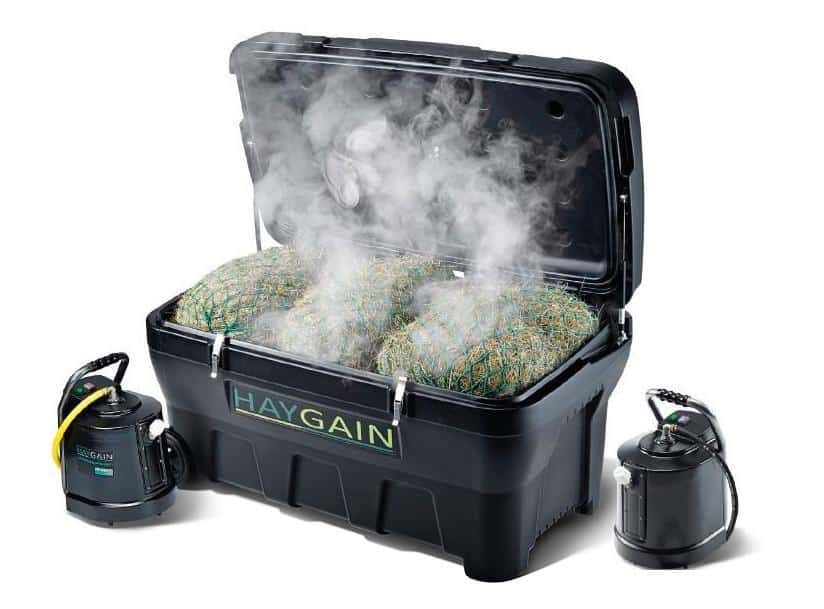Soaking vs steaming hay: what’s best for your horse?

At this grim time of year many horses rely on hay for their forage, which can lead to respiratory problems. So should you be soaking or steaming hay? We spoke to Haygain to find out more.
Respiratory disorder
Domestication of the horse has resulted in a drastic change to their natural habitat and feeding regimes. They spend an increased amount of time in the stable, where we provide them with conserved forage and often limit their forage intake. A combination of these factors has seen an increase in respiratory disorders.
Even good quality hay contains mould and fungal spores, which can effect the horse. According to research, one in six horses in the UK are diagnosed with recurrent airway obstruction (RAO), while a staggering 80% of horses stabled part-time suffer some degree of airway inflammation.
Better quality forage
Many owners soak hay to remove these spores, in the hope of feeding a better quality forage. Soaking also reduces the water-soluble carbohydrates (ie sugars) in hay. Carbohydrates have a negative effect on horses, particularly those who are suffering from laminitis – or equine metabolic syndrome – and with spring just around the corner, it’s certainly at the forefront of many owners’ minds.
Hay contains a lot of sugar, but the quantities vary between different grass species, so it can be difficult to find a solution that is best for all forage types.
Rise in bacteria
While soaking hay is a popular option, it actually has more negative impacts on your forage than positive. Soaking leaches the hay, so while it removes some of the sugar content and dampens the respirable particles, it gets rids of some of the key proteins and vital nutrients as well. Research has also found soaking hay causes bacteria levels to increase, up to five-times.
In comparison, steaming hay offers many benefits for the horse, as studies show that all respirable particles are removed and nutrients aren’t leached. Using a Haygain steamer kills all of the fungi and yeast and 98.84% of the bacteria found in the hay thanks to its unique manifold system.
Benefits of steaming
This patented system has spikes which inject steam into the centre of the bale or hay net, steaming from the inside out, unlike many homemade or cheaper alternative steamers. Without this penetration, the hay will act as an incubator of pathogenic bacteria, yeast, mould and fungi.
Haygain’s proven manifold spike system ensures all hay is steamed evenly from the inside out, eliminating all harmful mould, fungal spores, bacteria and dust mites. Steaming also has other notable benefits on forage including reducing the usage of antibiotics, preventing the prevalence of gastric ulcers and avoiding common respiratory issues.
For more information, visit haygain.co.uk.






